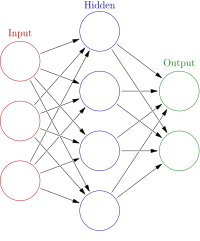
Photo from wikipedia
Abstract In the maritime environment, the Automatic Identification System (AIS) is used to monitor vessel activity concerning security and safety ocean-wide. AIS data has been used to detect anomalous behaviors… Click to show full abstract
Abstract In the maritime environment, the Automatic Identification System (AIS) is used to monitor vessel activity concerning security and safety ocean-wide. AIS data has been used to detect anomalous behaviors related to suspicious activities and hazardous events. Typically, clustering analysis is used to investigate anomalous events within the AIS data stream. However, the main challenge in this approach is to determine and execute the dissimilarity measure between trajectories since they differ in size and time. In addition, these calculations are computationally expensive and not scalable. To tackle this issue, compression algorithms can be applied to perform clustering analysis since they are typically used to reduce storage and processing time. Therefore, the proposed analysis will assess how compression algorithms affect clustering results with respect to detecting anomalous vessel trajectories. The analysis results show that a suitable compression algorithm can reduce the overall processing time with little impact on the clustering results while supporting the scalability of this type of analysis.
Journal Title: International Journal of Geographical Information Science
Year Published: 2023
Link to full text (if available)
Share on Social Media: Sign Up to like & get
recommendations!